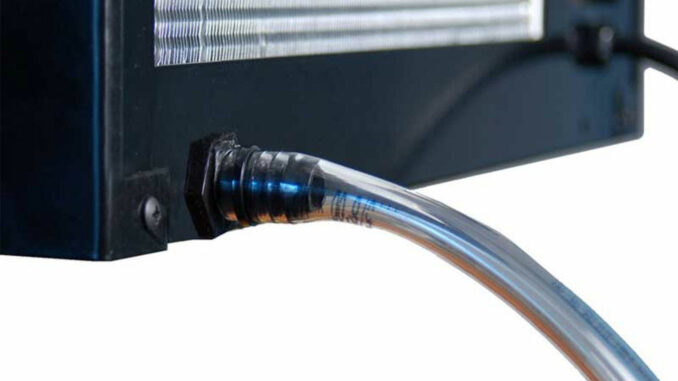
Proper Cellar Construction – Insulated and Airtight
Excess condensation can be caused by a poorly sealed wine cellar that is not airtight from the ambient environment. Cellars must be constructed with spray-in foam insulation or with a moisture barrier on the outside of the insulation, with no gaps in the door seams, and sealed lighting fixtures. Also, if you leave the door open to the wine cellar, warmer ambient air will enter into the cellar, which will cause condensation problems.
The Purpose of a Drain Line
In cellars that don’t have an airtight seal, condensation will form on the cooling unit’s evaporator coils, which get very cold when the cooling unit is running. Unless it has a way to escape from inside the cooling unit, the condensation

Drain Line – the Importance of a Trap
Our 1800 Series cooling units can be configured to include a drain for an additional cost. All other CellarPro cooling units come with a condensate drain line as standard equipment. For the condensation to flow, a trap must be set up in the drain line – so that the condensation moves down, then rises, then drops again – in order for the condensation to overcome any static pressure and allow the condensate to flow. In addition, the end of the drain line must not terminate in standing water.
Questions about how to prevent condensation? Are you thinking of purchasing a new cooling unit? Would you like further tips on optimizing your wine cellar? Don’t hesitate to call us at (877) 726-8496 or use the Live Chat feature at CellarPro Cooling Systems.